Text

Currently re-reading Sherry Turkle's Alone Together—and honestly, it’s been a slightly unsettling read. 📖 The book delves into our evolving relationship with technology, particularly the rise of social robots designed to replace human connection. From robot dogs and Furbies to children’s companions and elder care, this rapid technological progression raises a critical question:
Are we forgetting that nothing can truly replace the presence and compassion of another human being?
One point that really struck me: 📱 “Studies show that if two people are having lunch, a cell phone at the table steers the conversation to lighter subjects, and each party feels less invested in the other. It’s not surprising. Each person in the conversation knows that with a phone on the landscape, you can be interrupted at any time.”
This resonates deeply. I already try to keep my phone out of sight during meaningful conversations, but seeing the science behind it reinforces how essential it is to be present.
Other powerful quotes from the book: 👉 “We seem determined to give human qualities to objects and content to treat each other as things.” 👉 “Technology makes us forget what we know about life.” 👉 “Where we examine the assumption that we are getting something important from these new technologies, we must ask whether a technology expands our capacities and possibilities or exploits our vulnerabilities?” 👉 “People are lonely. The network is seductive. But if we are always on, we may deny ourselves the rewards of solitude.”
As a designer, these insights are crucial. The projects I aim to be a part of are not just about bridging the gap between humans and the natural world—but also about bringing us closer to each other.
Turkle’s research is a powerful reminder to reflect on our relationship with technology and consider how we can shift toward more compassionate, human-centered designs. 🌿
#humanconnection#digitalage#alonebutconnected#technologyanddesign#socialrobots#ethicaldesign#humanexperience#consciousdesign#compassionateinnovation#designresearch#digitaldetox#presenceovertechnology#futureofdesign#humanityfirst#empathyindesign#solitudeandconnection#designforsociety#rethinkingtechnology#visualcommunication#graphicdesign#designer#design research#design inspiration#AI#visualstorytelling
0 notes
Text

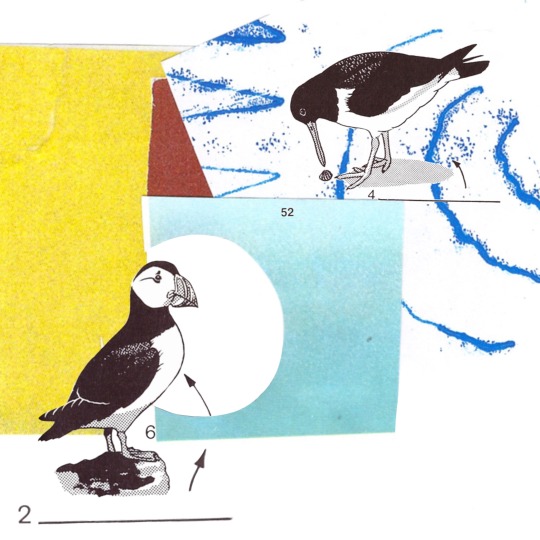
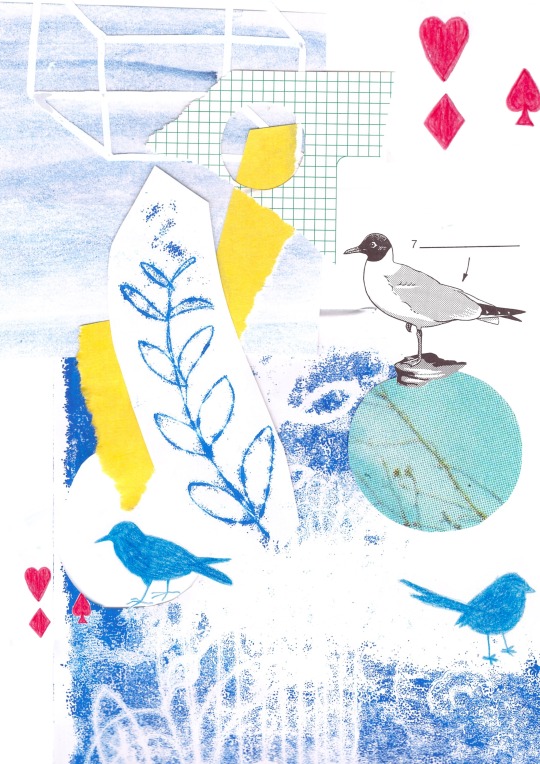


Alongside my research-based practice, which occupies much of my time, I love to unwind with some digital doodling. ✂️🖥️
Since my physical collage materials are back up north, I’ve been working with scans and found online ephemera to create these digital collages. It’s a way to keep my hands and mind loose, and these playful experiments often influence my work later on.
By exploring how textures, colors, and compositions come together, I discover new combinations that I can incorporate into future projects. I thrive when I can lay everything out in front of me, curating and arranging until it feels just right.
But beyond the creative exploration, these collages remind me that design isn’t just my job—it’s also my hobby. Sometimes, I create purely for fun, with no end goal other than to maintain my mental health and keep my creative mind active. 🧠✨
. . . #digitalcollage #collageart #creativeprocess #digitalart #graphicdesign #designinspiration #visualexperimentation #designpractice #colorandcomposition #digitaldesigner #collagecommunity #artistsoninstagram #processoverproduct #artforexpression #creativeplay #mentalhealthandcreativity #designtools #visualresearch #curateandcreate #ephemeralart #designtherapy #explorationthroughart #handandmind
3 notes
·
View notes
Text

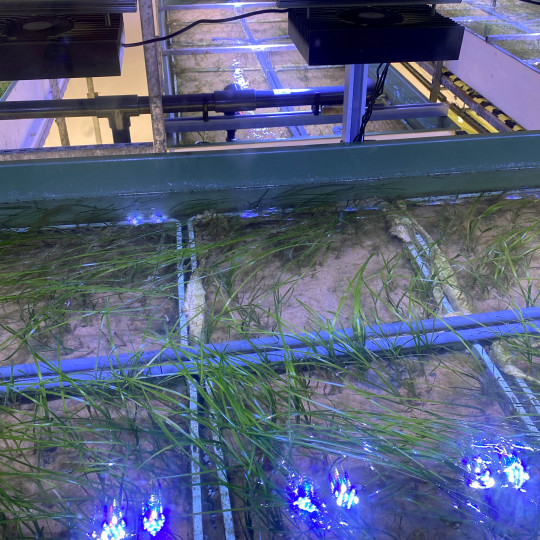

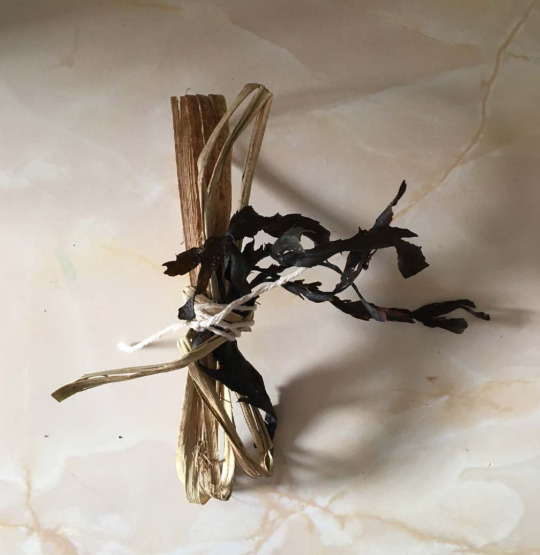
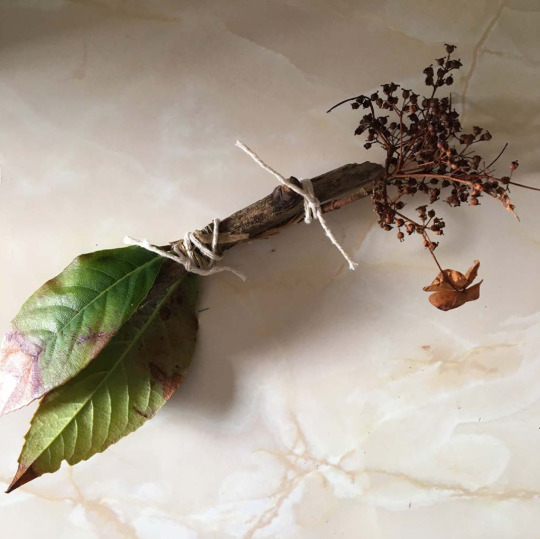

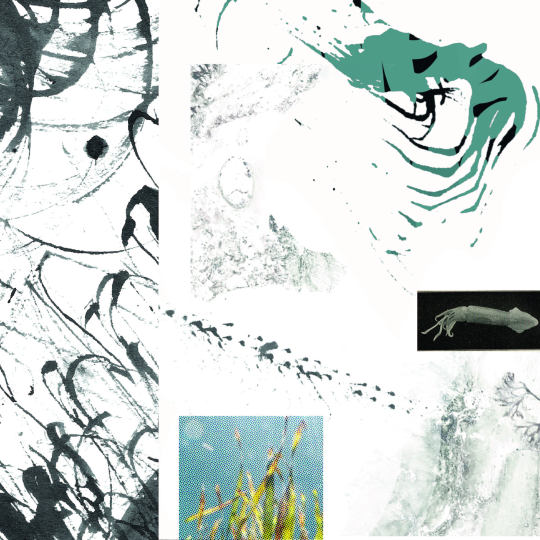

Part 2 of my Plymouth trip!
.
During my MA, my first project explored seagrass—a vital yet often overlooked marine ecosystem. 🌊 Back in 2023, there was significant attention on seagrass decline, but community action and awareness were still limited.
.
🌱 Seagrass meadows combat climate change by absorbing and storing vast amounts of carbon—up to 35 times more efficiently than rainforests of the same size. Despite covering only 0.2% of the ocean floor, seagrasses store 10% of the ocean’s carbon. (Source: Ocean Conservation Trust)
One project that influenced my research was Rosie Sherwood’s “The Seagrass Walk” (slide 3), exhibited in Plymouth. I couldn’t visit at the time, so experiencing it now has brought my own project full circle. It was also fascinating to see the seagrass labs at Plymouth aquarium to, the delicate process of growing such a plant for conservation efforts highlighted the need to conserve these biodiverse areas in situ, such as corals, chalk streams and marsh land. Before they disappear altogether.
.
The key research point for my project was inspired by a Cornish research study on the impact of chain moorings on seagrass, specifically how chain width affects seagrass scars. This visual impact led me to explore mark making as a medium.
I began by using secondhand chains to mimic the physical damage to seagrass beds. From there, I incorporated natural materials collected along the coastal path—twigs, seaweed, dried flowers, and grasses—to create custom tools for mark making, connecting the local environment back to the process.
To expand the idea, I developed a workshop prototype, inviting participants to make their own tools and experiment with ink. 🖌️ The hands-on experience fostered creativity and a tangible connection to the issue.
This project not only deepened my understanding of seagrass conservation but also ignited a passion for participatory, community-driven work. I look forward to developing more projects like this in the future!
#seagrassconservation#marineecosystem#oceanconservation#participatorydesign#designresearch#markmaking#ecoart#environmentalart#creativeworkshops#communityart#sustainabledesign#artandecology#conservationdesign#seagrassmeadows#naturebasedsolutions#coastalconservation#visualcommunication#designforchange#graphicdesign#handmadeart#designprocess#visualstorytelling#communityengagement
1 note
·
View note
Text


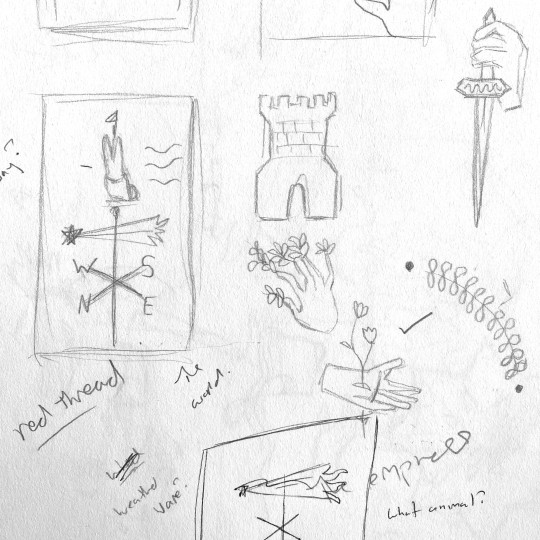

I’ve been hesitant to share my current personal project because it didn’t seem to align with the context of this page. But the more I’ve explored these tarot cards and their meaning, the more I’ve realized that this is exactly the place to share them. ✨
In design school, we’re taught to analyze our processes, dissect briefs, and navigate challenges with a critical lens. But life doesn’t always come with those blueprints. Instead, we learn through trial and error, often relying on default settings to navigate emotions, decisions, and obstacles.
That’s where tarot comes in. 🔮 It’s a tool for asking open-ended questions and inviting randomness to offer new perspectives—something we often miss when we stick to our usual ways of thinking. Tarot can help us see situations from fresh angles, offer advice, or even validate our decisions and achievements.
Much like in design, this validation and sense of progress is crucial for feeling fulfilled and valued.
Rather than sharing just the final designs, I’ll be posting the process—from initial sketches to more developed elements created in Procreate and Illustrator. Each card features recurring natural symbolism and the comedian and mammal : Emo Philips.
It started as a simple one-card exercise (his hair was perfect for The Fool). I enjoyed it so much that I kept going—and he became the natural face for this project! I’m thrilled with how they’ve come together and would love to get them printed one day.
#tarotdesign#illustrationprocess#digitalillustration#procreateart#illustratorart#creativejourney#graphicdesign#tarotcards#natureinspiredart#symbolismart#designinspo#conceptart#processoverproduct#sketchtoprocreate#visualstorytelling#artistsofinstagram#illustrationlove#independentartist#printdesign#creativityeveryday#authenticdesign#processmakesperfect#emophilips#visualcommunication#designresearch#sketches#procreate#illustrator#drawing
1 note
·
View note
Text

I’ve been dipping in and out of this book for a while, and it’s been a mind-expanding read. So many ideas, thought experiments, and explorations. I wanted to share some quotes of interest here . As a ‘green’ designer, I believe it’s not just about how or what we make, but also knowing when not to make. I spent years as a collage artist, working with vintage materials and my own sources. While the process brought joy, the outcomes often became waste—projects now stored under my bed, unused. . Switching to research-based work gave me a new perspective. The ‘green’ design world often focuses on products; —bio-materials, waste-based objects, inventive artefacts. While beautiful and meaningful in this time of change, these objects don’t always address systemic issues. They spark conversation but rarely reduce the destruction caused by our current ways of living. . Ironically, many ‘green’ designs reinforce our capitalist obsession with owning. As this book reminds me, what we need isn’t more stuff, but more presence. To live in our world as humans in real time. . Jean Baudrillard expresses it perfectly: — “Our world may now seem senseless to many of us simply because it has become placeless.” — “The very definition of real has become: that of which it is possible to give an equivalent reproduction... the real is not only what can be reproduced but that which is always already reproduced: the hyperreal... which is entirely in simulation.” . We’ve evolved in nature but now live in tech-driven contexts. As Robert Ornstein and Paul Erlich (1989) observed: — “Humans still operate in the modern world with an ‘old’ brain genetically adapted to a largely natural physical context in which we evolved but no longer live.” . This resonates deeply: — “We are a culture so shaped by technology that any attempt to outwardly distinguish between our affection for nature and the earth and our dependent fascination with technology is likely to be impossible.” . All art and design are valid - But we need to challenge ourselves with tougher conversations about whether our creations are helping, or not.
#graphicdesign#designer#consciousdesign#ethicaldesign#architecture#landscape#sustainability#sustainabledesign#designresearch#researcher#designresearcher#designlover#ecologicaldesign#greendesign#designprocess#visualcommunication
0 notes
Text


One of the most interesting design aspects that I discovered through my MA was the theory of Kiki and Bouba. Which links up everything from shapes, sounds to typography.
🔺 Kiki — Spiky, sharp, edgy.
🔵 Bouba — Round, soft, flowing.
Research has found this is a universal phenomenon, transcending language and cultures. This is SO important to understand in ethical design, as it could be the key aspect that could help something be a success. In design, we don’t just create for functionality—we create for human experience. The Kiki-Bouba effect reminds us of the subconscious cues we send.
.
Here's how this influences ethical design:
Accessibility:
Designing for inclusivity means understanding how shapes, sounds, and even visual elements trigger emotional or sensory responses.
🟢 Rounded buttons may feel more inviting and safe than sharp, angular ones.
Emotional Design:
Want users to feel calm? Opt for "Bouba-like" visuals—soft, rounded, and smooth. Need urgency? “Kiki” elements can create a sense of action or alertness.
😌 Calm = Rounded shapes.
⚠️ Alert = Angular shapes.
Avoid Manipulation:
Ethical design is about trust. Misusing these associations to manipulate user behavior (e.g., making aggressive designs to cause anxiety or urgency) can harm users’ well-being.
.
.
By understanding Kiki & Bouba, we can craft experiences that feel intuitive, fostering empathy and trust in our designs. Let’s build with intention, not manipulation. ✨ (looking at you marketing teams)
.
I also wanted to share some interesting research that presents animals understanding this theory! Which in itself is so fascinating and could be used to design for ecology, conservation and a resilient future.
#EthicalDesign#KikiBouba#DesignPsychology#UserExperience#UXDesign#InclusiveDesign#AccessibilityInDesign#EmotionalDesign#visualcommunication
0 notes
Text

A few days ago, I shared snaps from a recent trip to Plymouth, where a visit to The Box sparked fresh inspiration and motivation. ✨ One part of the exhibit that stood out was the swimming hats designed around the folklore and culture of Cornwall and Devon. 🏊♀️
Inspired by this, I decided to create my own design, rooted in the heritage of my origin—the Peak District. 🌄 My concept features:
A millstone, symbolizing the region’s industrial past The White Nancy, an iconic Macclesfield landmark 🏔️ A flint, reflecting the natural elements of the area It’s been so refreshing to just create without overthinking or pressuring myself to post perfectly polished work. I want this page to reflect my authentic practice—the things I know, love, and draw inspiration from. I hope that’s coming through! 🌿
#graphicdesign#designinspiration#designresearch#authenticdesign#creativepractice#regionaldesign#peakdistrict#culturaldesign#heritageart#millstone#whiteNancy#folkloreart#visualstorytelling#macclesfield#illustrationart#processoverperfection#digitalartwork#natureinspired#devonandcornwall#authenticity#creativedesign
1 note
·
View note
Text

Last year, I embarked on a journey to explore conscious designing through a dedicated page called @design.praxis, sharing research findings and visual inspirations rooted in thoughtful and sustainable design. It was a space born from my passion for research.
I'm now shaping my work into a holistic studio approach—spanning Research, Idea Generation, and Outcome Collaboration. This means integrating all aspects of my process into one space. Design outcomes are just one piece of my practice, and one in which I want to take a small side step away from.
👁️🗨️ Embracing Two-Eyed Seeing: A Path to Holistic Design 🌱
Two-Eyed Seeing is a transformative principle that integrates Indigenous knowledge systems with Western sciences to build a holistic understanding of complex challenges. It teaches us to work alongside communities as equal partners, honoring both traditional wisdom and modern innovation to co-create sustainable, inclusive solutions.
By embracing Two-Eyed Seeing, designers like us can foster meaningful collaboration and drive positive change, rooted in respect and shared knowledge. Let's design for purpose, together.
‘Two-Eyed Seeing involves learning to see with the strengths of each knowledge system and together with one eye never subsuming the other.’ - Martin, 2012
Source: REID, Andrea J. et al., 2021. “‘Two‐Eyed Seeing’: An Indigenous Framework to Transform Fisheries Research and Management.” Fish and Fisheries, 22(2), 243–61.
#graphicdesign#IndigenousKnowledge#designprocess#HolisticDesign#CommunityEngagement#CollaborativeDesign#InclusiveDesign#CoCreation#CommunityDrivenDesign#ConsciousDesign#GreenDesign#DesignResearch#ClimateChangeDesign#EthicalDesign#SocialInnovation#DesignWithPurpose
0 notes
Text
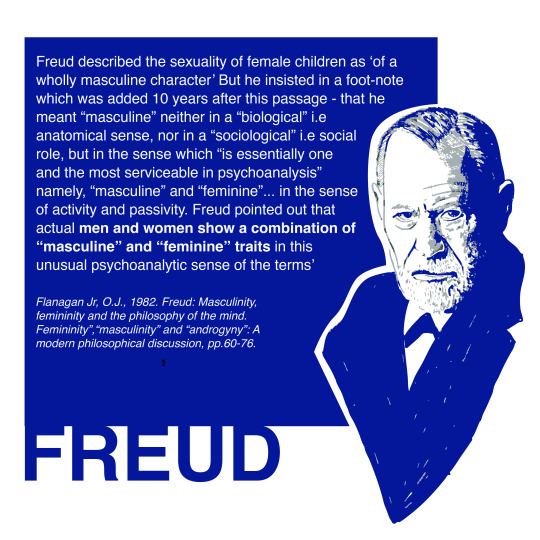
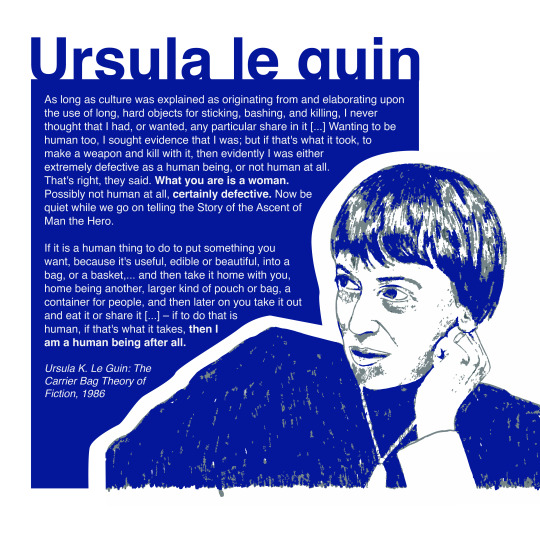
Currently diving into research slides for my project on meat and masculinity. its interesting to revisit, reminding me of its vast implications and how important it is to constantly re-evaluate—not just how these ideas affect us but how we might unknowingly perpetuate systems that reinforce the status quo.
Two key pieces of research stood out to me, and I thought I’d share them:
Freud on Gender and Systems - Freud often appears in discussions about gender, and his ideas help frame the systemic nature of masculinity and femininity. These aren’t traits confined to men or women—they’re societal constructs we all navigate and embody in nuanced ways depending on the context. Recognizing this helps us see that these issues aren’t individual but structural, affecting everyone.
Ursula K. Le Guin’s Carrier Bag Theory For balance, and her book 'Carrier Bag Theory of Fiction'. She critiques the traditional “hunter-hero” narrative of human origins, which centers on the spear and violence. Instead, Le Guin highlights gatherers and caregivers as essential to humanity’s survival. This reframe reveals how early societies relied on everyone—regardless of gender—taking on both masculine and feminine roles to thrive.
Le Guin’s insights feel especially relevant when we consider modern attitudes like, “I’ll eat whatever I want because I could kill it.” The truth is, most of us no longer kill what we eat, yet cultural narratives around meat, power, and masculinity haven’t caught up. Reframing these stories and questioning our roles within them is vital to moving forward.
This research has inspired me to keep exploring how design and storytelling can challenge societal norms and offer new perspectives.
#meatandmasculinity#ursulakleguin#freud#carrierbagtheory#genderstudies#systemicissues#culturalnarratives#socialchange#feminism#masculinity#designresearch#thoughtsfortoday#foodculture#societyandculture#design#visualcommunication#graphicdesign
1 note
·
View note
Text





A recent trip to Plymouth allowed some much-needed mental breathing room. 🌊 A small write-up of an exhibit has been posted on my old WordPress (website is currently private): Exploring Plymouth's Ocean City: The Box Museum Experience - https://kerryanncleaverblog.wordpress.com/2024/11/17/exploring-plymouths-ocean-city-the-box-museum-experience/
Pic 1 - Swimming hats created in 2021 for the Gorran Haven Cold Water Crew, a group of sea swimmers who support each other with motivation and companionship. 🏊 Each hat represents an important aspect of culture or folklore in the South West.
Pic 2 - A striking ship figurehead. 🚢
Pic 3 - In collaboration with the sea, the artist connected with water gatherers from around the world to bring all the seas to one location. 🌍 ‘The world addresses personal, poetic, and geopolitical aspects of human engagement with our seas.’
Pic 4 + 5 - Exhibit element exploring plastic and microplastic: Fisherman’s Kisses—discarded plastic rope. ‘Over 10,000 small sections of cut net were collected by local beach-cleaning volunteers in just a few visits to Whitsand Bay. A small number of them are displayed here.’ ♻️
#artexhibit#exhibitreview#ecologicaldesign#microplastics#graphicdesign#designresearch#devondesign#seaswimming#installationart#visualcommunication#multimedia#environmentaldesign#conservation#artwork#museumvisit#creativeprocess#oceanconservation#coldwaterswimming
4 notes
·
View notes
Text



A few weeks ago I came across this project on Dezeen 'H2ERǴ ring made with metals "mined" by plants’ (last slide) it was so exiting to see something I had researched and formed a speculative projects about, manifest into a actual product! - https://www.dezeen.com/2024/08/30/phytomined-h2erg-ring-metals-plants-design/ . These plants are called 'Hyperaccumulators' - plants which can be used as tools to collect materials such as metal from the ground. As explored in James Bridle's book 'ways of being' he sees these plants being used in Greece - ‘The plot (in Greece he is at) produces between 6 and 13 tonnes of biomass per hectare, depending on the crop, and each of those hectares produces between 80 and 150KG of nickel. By comparison, a tonne of mined nickel ore contains about 1 or 2% nickel, or 10 to 20KG.’ - Such a hyperaccumulator is also seaweed - which is a current talking point in the 'New Scientist' podcast published on the 31st of May 2024. . My project 'Eco Fenders for Hyperobjects' looks at this topic from a different angle. Of using these plants as barriers for future concern - . This project germinated from a profound awareness of the multifaceted crisis gripping the UK- ranging from biodiversity loss and energy concerns to mounting waste and a perceptible apathy towards enhancing the well-being of its populace. I embarked on a journey to craft a natural method of crisis aversion. This dynamic map seeks to unravel ways in which our small island can address and rectify the human-induced crises through ecological solutions. Examining locations of landfills, nuclear reactors and soil fertility. Functioning as a speculative endeavor, the project introduces a visionary plant symbolic of climate change and other land-related challenges we currently confront.
#greendesign#anthropocene#visualmedia#visualcommunication#regenerativedesign#ethicaldesign#symbiosis#hyperaccumulators#naturelover#graphicdesign#speculativedesign#discursivedesign#designconcept#designprocess#ecodesign#ecologicaldesign#sunflowers#landscaperestoration#conservation
1 note
·
View note